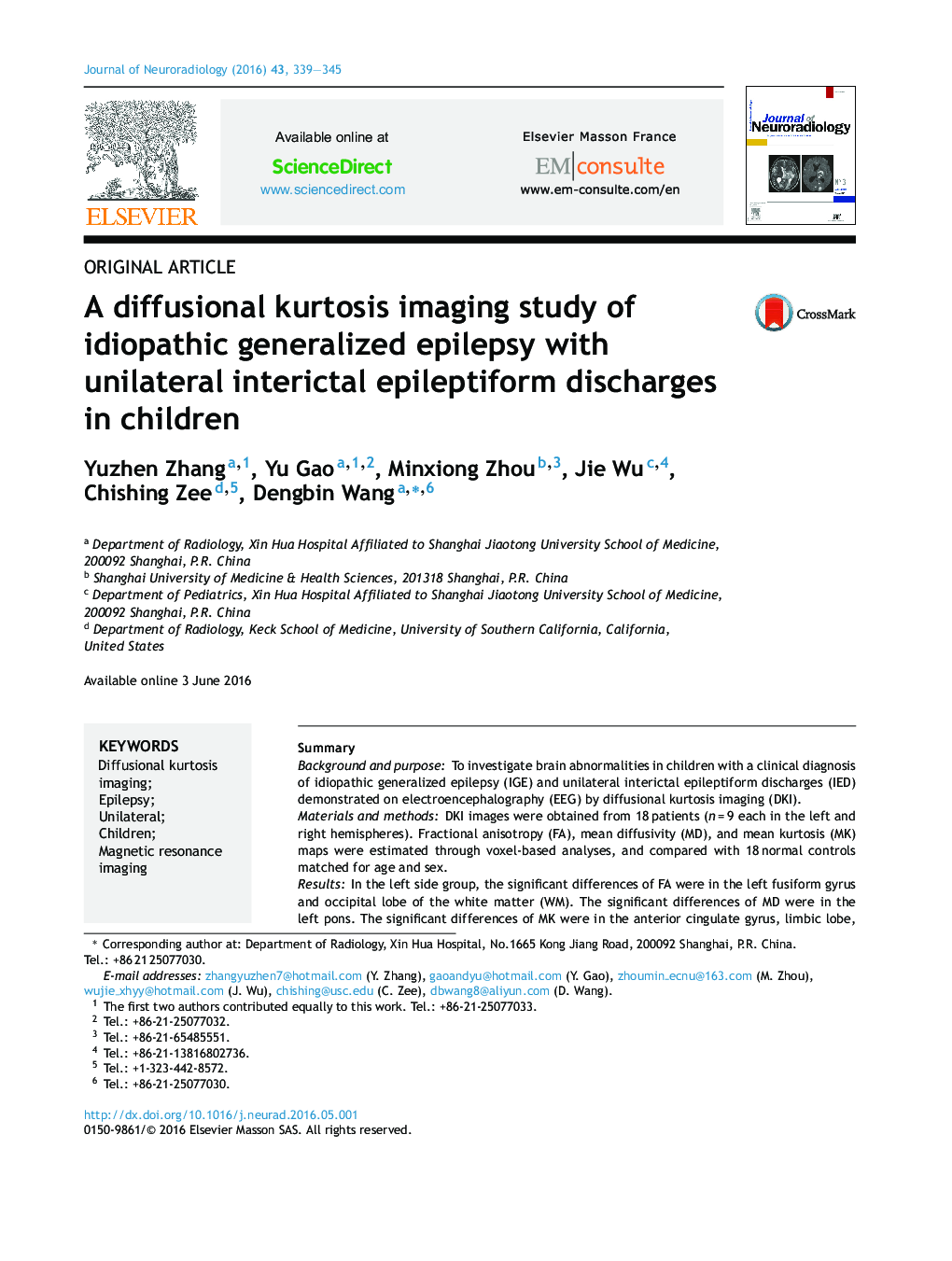| Article ID | Journal | Published Year | Pages | File Type |
|---|---|---|---|---|
| 4233425 | Journal of Neuroradiology | 2016 | 7 Pages |
SummaryBackground and purposeTo investigate brain abnormalities in children with a clinical diagnosis of idiopathic generalized epilepsy (IGE) and unilateral interictal epileptiform discharges (IED) demonstrated on electroencephalography (EEG) by diffusional kurtosis imaging (DKI).Materials and methodsDKI images were obtained from 18 patients (n = 9 each in the left and right hemispheres). Fractional anisotropy (FA), mean diffusivity (MD), and mean kurtosis (MK) maps were estimated through voxel-based analyses, and compared with 18 normal controls matched for age and sex.ResultsIn the left side group, the significant differences of FA were in the left fusiform gyrus and occipital lobe of the white matter (WM). The significant differences of MD were in the left pons. The significant differences of MK were in the anterior cingulate gyrus, limbic lobe, gray matter (GM) and WM of the right cerebrum. In the right side group, the significant differences of FA were in the WM of the left cerebrum. MD identified differences in the frontal, temporal, occipital, and parietal lobes of both hemispheres, especially in the limbic system, fusiform gyrus, uncus, and parahippocampal gyrus. The significant differences of MK were in the GM of the right cerebrum, particularly in the rolandic operculum and frontal lobe.ConclusionsDKI is sensitive for the detection of diffusion abnormalities in both WM and GM of IGE in children. Secondary brain abnormalities may exist in regions outside the unilateral epileptogenic zone through the limbic epileptic network, and can be detected by DKI indices FA, MD and MK.
